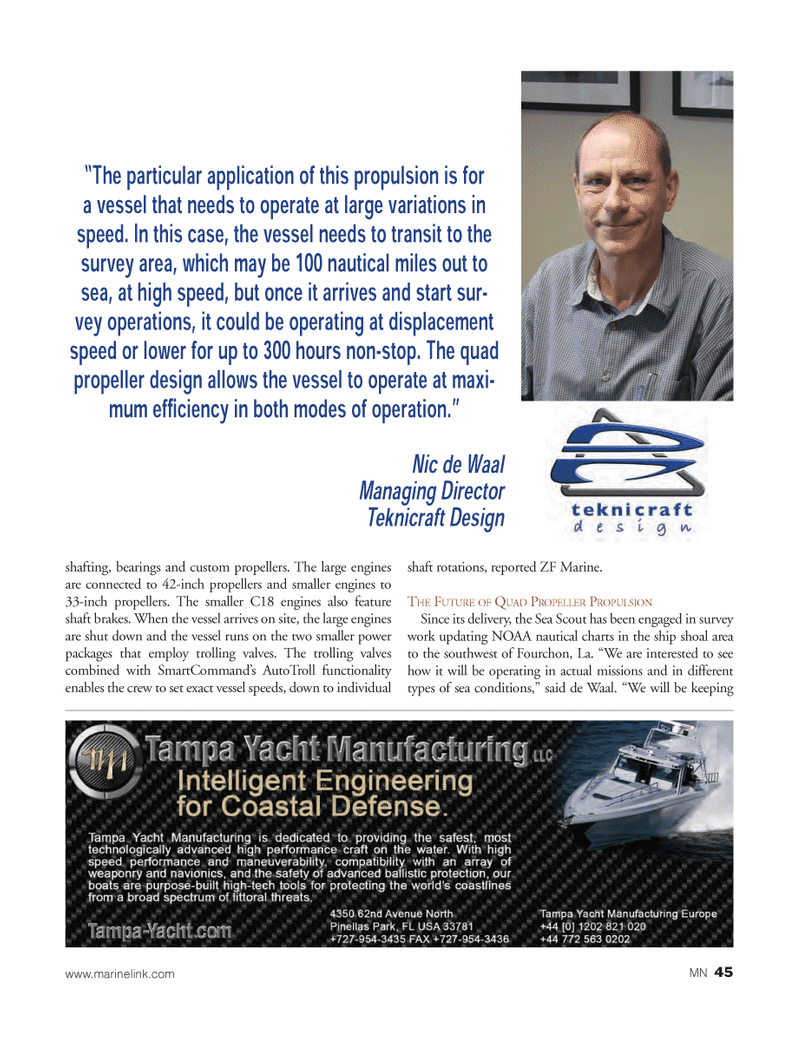
Page 45: of Marine News Magazine (July 2012)
Propulsion Technology
Read this page in Pdf, Flash or Html5 edition of July 2012 Marine News Magazine
shafting, bearings and custom propellers. The large engines are connected to 42-inch propellers and smaller engines to 33-inch propellers. The smaller C18 engines also feature shaft brakes. When the vessel arrives on site, the large engines are shut down and the vessel runs on the two smaller power packages that employ trolling valves. The trolling valves combined with SmartCommand?s AutoTroll functionality enables the crew to set exact vessel speeds, down to individual shaft rotations, reported ZF Marine. THE FUTURE OF QUAD PROPELLER PROPULSION Since its delivery, the Sea Scout has been engaged in survey work updating NOAA nautical charts in the ship shoal area to the southwest of Fourchon, La. ?We are interested to see how it will be operating in actual missions and in different types of sea conditions,? said de Waal. ?We will be keeping ?The particular application of this propulsion is for a vessel that needs to operate at large variations in speed. In this case, the vessel needs to transit to the survey area, which may be 100 nautical miles out to sea, at high speed, but once it arrives and start sur-vey operations, it could be operating at displacement speed or lower for up to 300 hours non-stop. The quad propeller design allows the vessel to operate at maxi-mum efÞ ciency in both modes of operation.? Nic de Waal Managing DirectorTeknicraft Design www.marinelink.com MN 45

 44
44

 46
46
